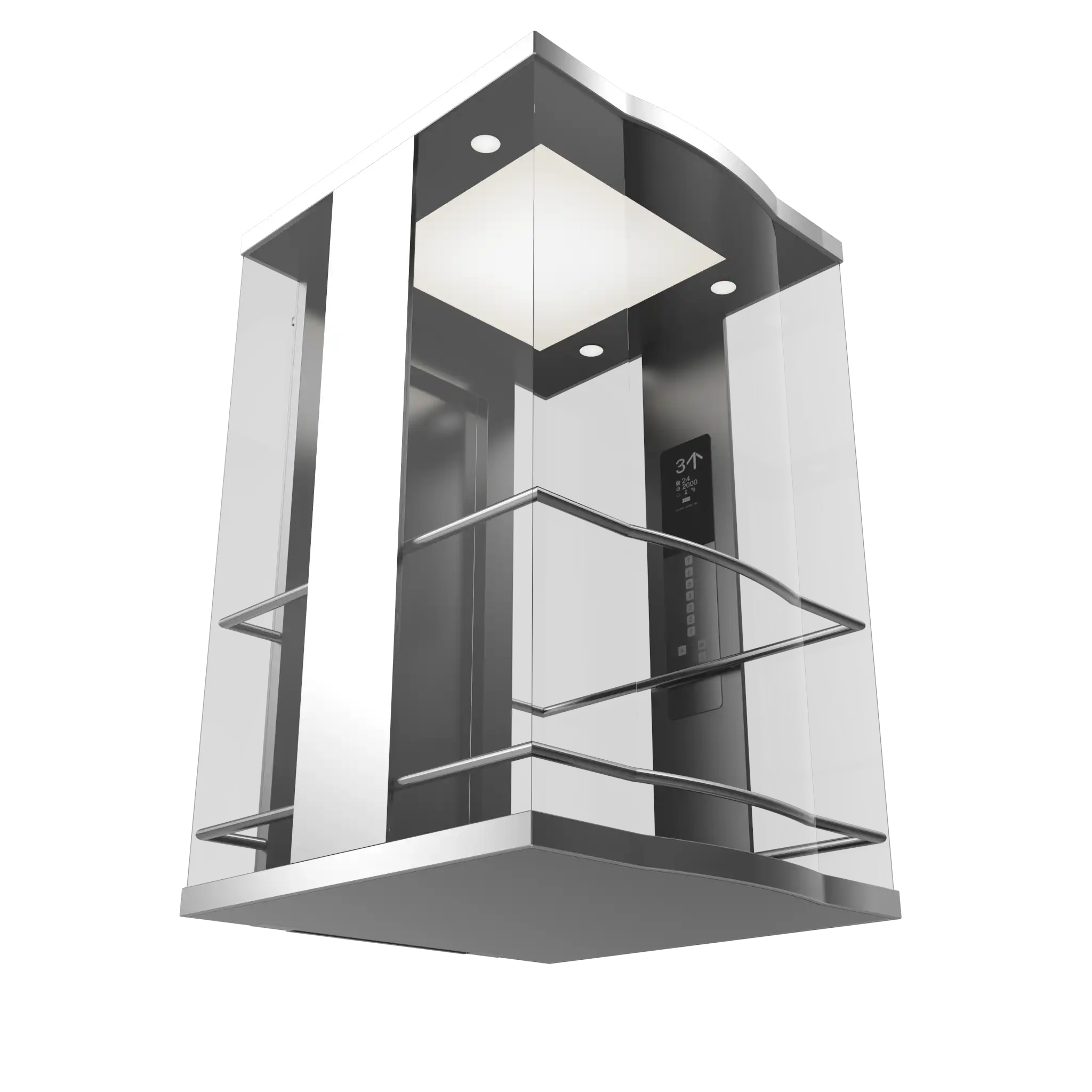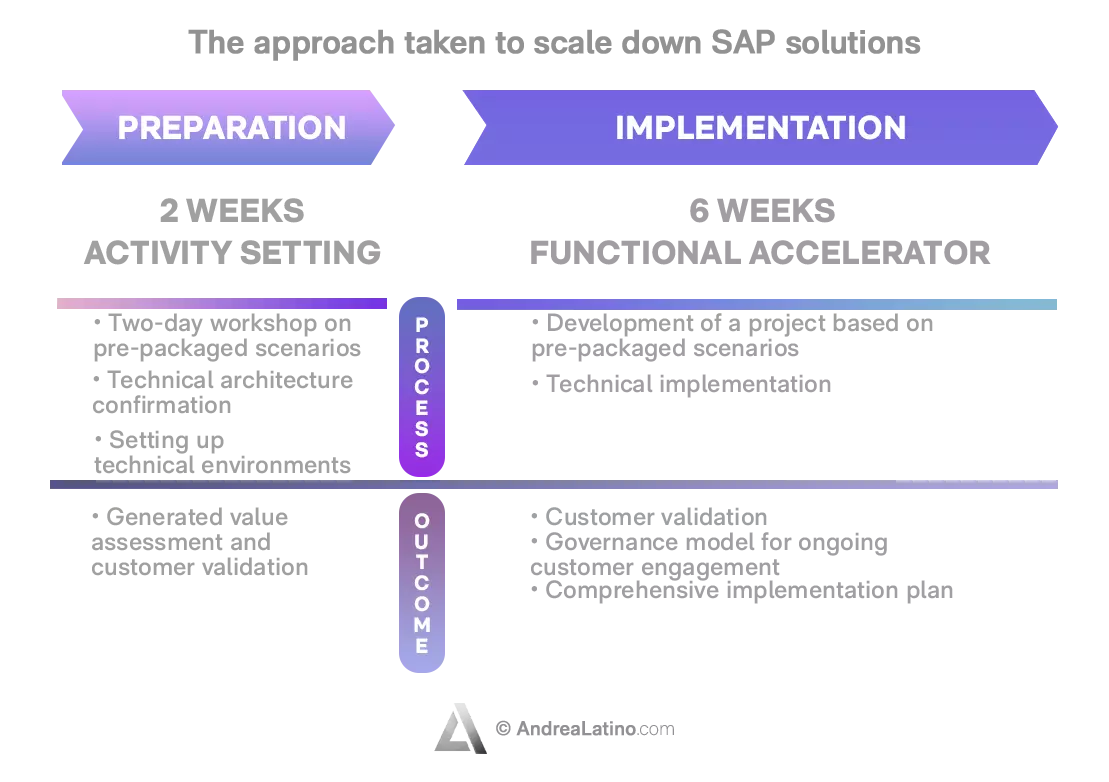Strategy & Innovation
Scaling down, aiming up
Together with DigiBit, a small but mighty system integrator, I built accelerators to make SAP solutions affordable to SMEs under 50M in revenue. The cool part? We achieved the goal in just 2 weeks, delivering a “lighthouse” solution globally.
-
Client
DigiBit SAP -
Industry
High Technology -
Year
2018

CHALLENGE
Is digital transformation a privilege?
Many people look at today’s marketplace as an ocean where the biggest fish ends up eating the smallest ones. And nothing else. But the truth is way more complex than that.
In the digital world, software leads the way, providing solutions to all kinds of problems. Embracing such technologies, however, seems possible only to certain large businesses, and looks unattainable to others.
What if this were to change? The logic behind this case is that digital transformation doesn’t necessarily impact only large companies. Even SMEs under €50 million in revenue can make a difference and be catalysts for change. That’s why my collaboration with DigiBit has given me so much satisfaction.
SOLUTION
How to make solutions from the digital world accessible to a broader audience?
DigiBit is a system integrator focused on SAP solutions. The challenge I was facing was to scale down the SAP “Leonardo” solutions to make them accessible to smaller companies. Typically, there are 3 types of difficulties when dealing with this assignment:
- The solutions can be expensive, so that only large companies can afford them;
- Applications can be restricted to certain areas of the business and verticals;
- Legacy perception of some previous solutions being rigid.
In just two weeks, the goal was achieved by getting 5 solutions scaled down in the areas of IoT, blockchain, augmented reality, and iOS apps.
They were affordable, with short go-to-market times and concrete practical applications. For each proposed solution, I also wrote down the business questions to ask potential customers of the industry where the solution could be applied. They also included potential target customers and examples of how the solution could solve certain business challenges.

Results
How do you make SAP solutions affordable for small businesses?
To sum up, I started by analyzing a certain number of business issues. For example, the need for a remote asset monitoring system, risks related to infrastructure maintenance and preservation, inventory shortages, acquisition of raw materials, supply bottlenecks or unexpected peaks in demand.
Then I moved on to new solutions: IoT sensors for asset management, optimization and maintenance; sensing components connected to a central system; knowledge extraction from collected data; a simulator able to predict how costs will change under different scenarios.
We are facing a future where almost everything that can be automated will be automated. Therefore, innovation and excellence must not be reserved only to large companies, but indeed can be a beacon of hope for smaller companies as well.
Our solutions were deemed so interesting that our team was called to Barcelona at SAP’s European HQ to present it. Eventually, the whole package became, in record time, an SAP Lighthouse Solution — a best practice to be shared in all other markets.
impact
& key activities
-
2weeks to scale down
SAP Leonardo Solutions
50+business questions to ask
potential customers
-
5scaled-down
solutions
6examples of potential
target customers
Stay in wonderland
Let me show you how deep the rabbit hole goes.
Here are more Client Results:

Marketing & Sales
When Innovation met Automation…

Public Affairs & Comms
From local to global

Strategy & Innovation
Scaling down, aiming up

Operations & Human Resources
Get the change rolling

Marketing & Sales
Reinventing medicine with digital transformation

Strategy & Innovation
Where we’re going, we don’t need roads

Public Affairs & Comms
Writing a new page for technology

Strategy & Innovation
Climbing the digital ridge
